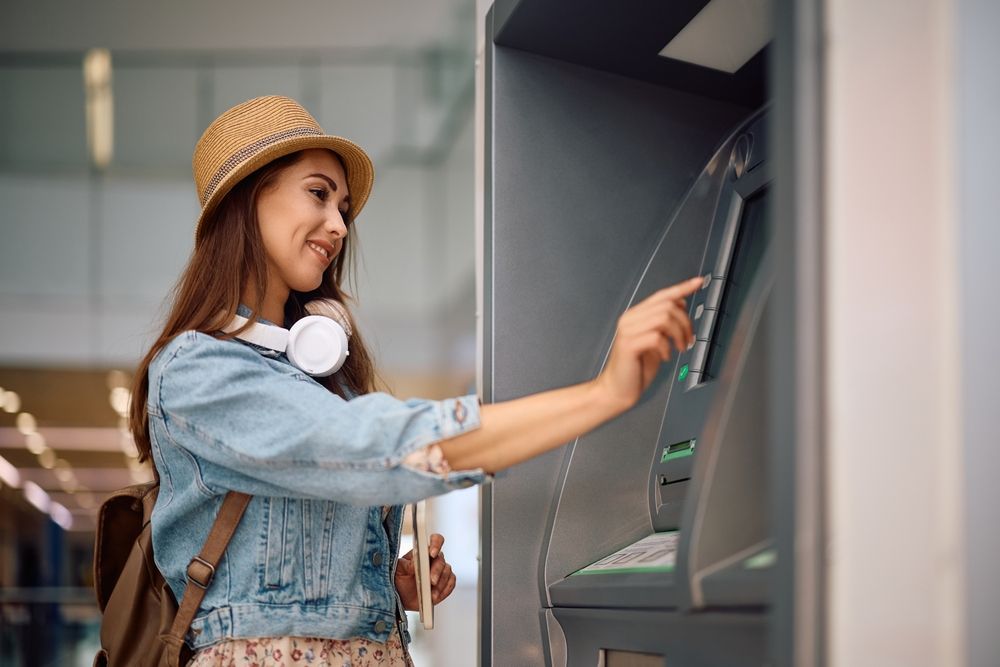ATM convenience comes at a cost. Whether you’re withdrawing cash from a different bank, using an overseas ATM, or taking out small amounts too often, those small fees can quietly eat away at your hard-earned money. For many people, ATM charges are a recurring expense they barely notice—until they add up to hundreds per year. The good news? Avoiding these fees doesn’t require complicated tricks. With a few mindful habits and the right banking choices, you can keep more of your money where it belongs: in your account.
Know Where Your Fees Come From
Understanding how and when you’re charged is the first step to cutting unnecessary ATM costs.
-
Out-of-network fees: Your bank and the ATM owner may both charge you for using a different network.
-
Foreign transaction fees: International withdrawals often include conversion fees and extra charges per transaction.
-
Balance inquiry fees: Some ATMs charge even for checking your balance.
-
Frequent withdrawals: Taking out small amounts repeatedly can lead to multiple fees.
-
Premium location fees: ATMs at airports, hotels, or convenience stores usually cost more to use.
Take a few minutes to review your monthly statement—it often lists every fee in detail. Awareness helps you target exactly where to cut back.
Use In-Network ATMs Whenever Possible
The simplest way to avoid fees is to stay within your bank’s network.
-
Check your bank’s ATM map: Most banking apps and websites show free ATM locations nearby.
-
Use co-op networks: Some banks share ATM systems, allowing customers to withdraw money from partner machines for free.
-
Plan your routes: If you travel regularly, identify free ATM locations before leaving home.
-
Withdraw extra cash when shopping: Some stores let you take cash back during a debit purchase at no additional cost.
-
Keep a small emergency amount: Having backup cash reduces the need for last-minute withdrawals.
With a little planning, you can skip the random ATMs and the expensive fees that come with them.
Switch to a Bank That Reimburses Fees
Many online and digital-first banks understand that ATM access matters—and they often reimburse third-party fees.
-
Look for “no ATM fee” accounts: These refund any charges from other banks or ATM owners.
-
Check reimbursement limits: Some banks cap refunds at a certain dollar amount per month.
-
Review availability: Online banks without branches often have wider ATM partnerships.
-
Compare interest rates and perks: Banks that waive fees often offer better savings rates too.
-
Ask your current bank: Some traditional banks offer fee waivers for premium account holders.
Switching to a fee-friendly bank can be one of the easiest ways to eliminate ATM costs permanently.
Withdraw Larger Amounts Less Frequently
Small, frequent withdrawals might feel convenient, but they often cost more in the long run.
-
Plan your cash needs: Estimate how much you’ll need for the week or month.
-
Take one or two larger withdrawals: Instead of multiple small ones, save on per-transaction fees.
-
Keep withdrawals organized: Track how much cash you’ve withdrawn to avoid surprise shortages.
-
Use secure locations: Larger withdrawals are best made at safe, well-lit ATMs or inside bank branches.
-
Store cash safely: Use a wallet divider or envelope system to manage spending.
Consolidating withdrawals saves both money and time.
Avoid International Withdrawal Pitfalls
When traveling abroad, ATM charges can multiply through hidden fees.
-
Choose travel-friendly banks: Some financial institutions specialize in low or no foreign transaction fees.
-
Use currency exchange apps: Check live conversion rates before withdrawing to spot inflated exchange fees.
-
Withdraw larger amounts abroad: Fewer withdrawals mean fewer fees.
-
Notify your bank of travel plans: This prevents unnecessary account freezes while overseas.
-
Consider prepaid travel cards: They often offer locked-in exchange rates and low withdrawal costs.
With smart preparation, you can enjoy your trip without watching your vacation funds vanish into bank fees.
Skip Out-of-Network Machines
It’s easy to swipe your card at the nearest ATM—but convenience comes at a cost.
-
Memorize surcharge warnings: Always read the on-screen notice before confirming a withdrawal.
-
Use bank locators: Apps like Allpoint or MoneyPass help you find fee-free ATMs nearby.
-
Avoid “independent” ATMs: Machines in convenience stores or gas stations often charge higher fees.
-
Plan withdrawals around errands: Use your bank’s ATMs when you’re already nearby.
-
Consider cashback options: Grocery stores, pharmacies, and retail chains often provide free cash back.
Avoiding random machines might save just $3–$5 each time—but that’s hundreds a year in savings.
Go Cashless When Possible
The more you rely on digital payments, the less you’ll need to withdraw from ATMs at all.
-
Use debit or credit cards: Many retailers accept cashless payments without extra fees.
-
Try mobile payment apps: Apple Pay, Google Pay, and PayPal are accepted nearly everywhere.
-
Use peer-to-peer transfers: Apps like Venmo or Zelle make splitting bills easy without cash.
-
Set up direct deposits: Receive paychecks and transfers directly into your bank account.
-
Monitor digital spending: Track your electronic payments to stay within budget.
A cashless lifestyle isn’t just convenient—it’s also one of the simplest ways to avoid ATM-related expenses altogether.
Take Advantage of Banking Tools
Your bank likely offers digital features that make cash management easier and cheaper.
-
Enable low-balance alerts: Prevent overdrafts that might lead to ATM usage or penalty fees.
-
Check balance online: Avoid paying for balance inquiries at ATMs.
-
Use mobile deposits: No need to visit ATMs for check deposits anymore.
-
Schedule bill payments: Automatic online payments reduce cash dependence.
-
Track withdrawal history: Spot patterns that can help you make smarter withdrawal decisions.
Leveraging digital tools gives you more control over when—and how—you use your money.
Avoid Common Mistakes That Cost You
Even small missteps can undo your savings progress.
-
Ignoring fee notices: Always read on-screen fee warnings before confirming.
-
Withdrawing cash impulsively: Plan ahead instead of using ATMs out of convenience.
-
Using credit cards at ATMs: Cash advances come with high fees and interest charges.
-
Overlooking foreign transaction costs: These can be higher than domestic fees.
-
Failing to switch banks: Staying loyal to a high-fee bank can cost more than you realize.
Awareness and consistency are your best defenses against unnecessary ATM charges.
ATM charges might seem like minor inconveniences, but they can add up to real money over time. By choosing fee-free networks, switching to banks that reimburse charges, withdrawing strategically, and embracing digital payment options, you can eliminate this hidden drain on your finances. The key is mindfulness—planning ahead and using your bank’s tools to your advantage. With these simple strategies, you’ll stop paying for convenience and start keeping more of what you earn.





